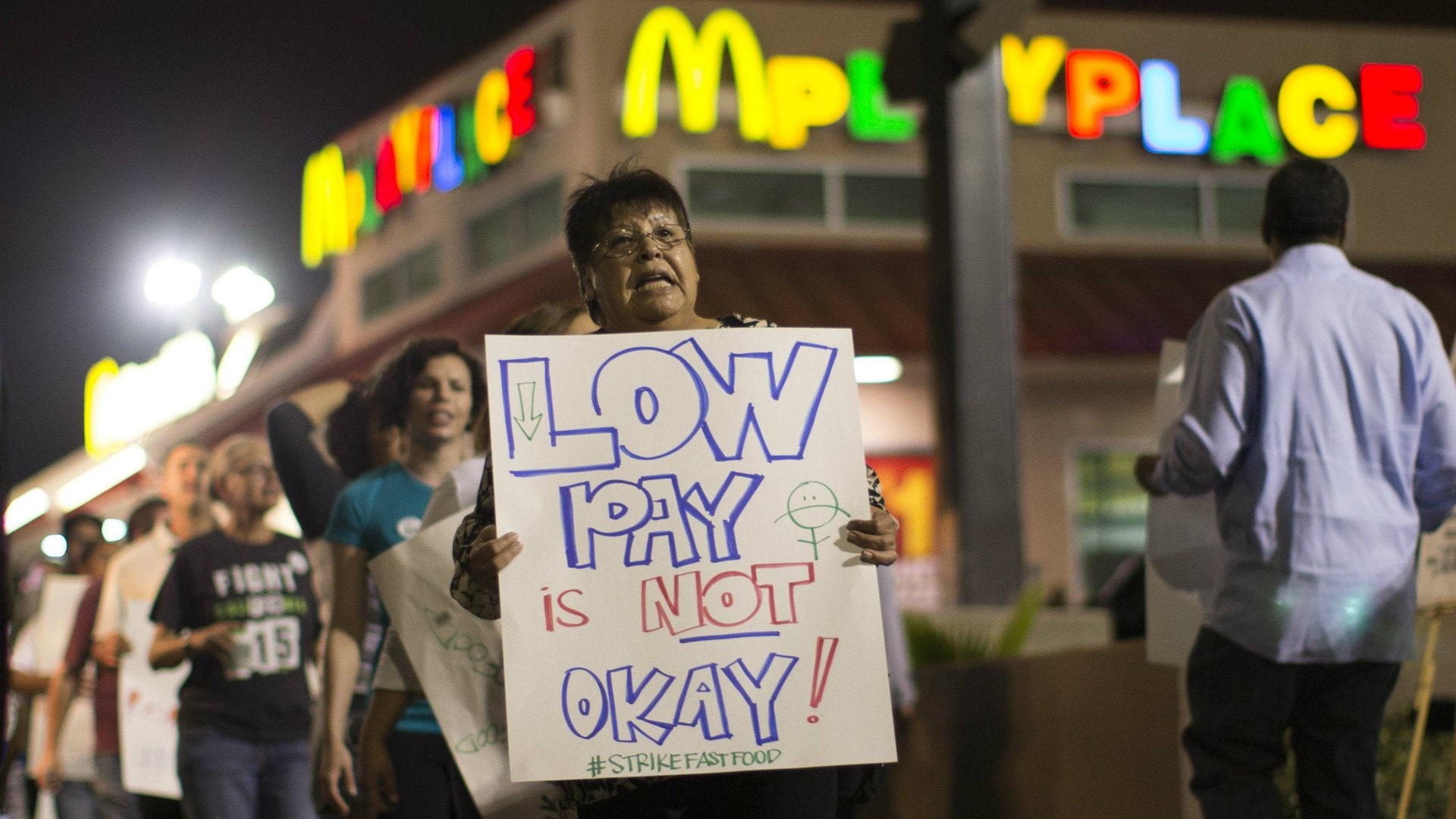Why more people feel poorer, even if they’re not
Believe it or not, most Americans have never lived so well. Inflation-adjusted incomes may be stagnant, but these incomes can buy more goods and services, life expectancies are higher, and most Americans have more leisure time to spare.


Believe it or not, most Americans have never lived so well. Inflation-adjusted incomes may be stagnant, but these incomes can buy more goods and services, life expectancies are higher, and most Americans have more leisure time to spare.
Yet you often hear about how terrible things are for the average American household. That may be true, too.
This is because even if incomes are stagnant or rising only slightly, they are more volatile—or put another way, riskier—than ever. More unstable earnings makes it seem like American households are worse off.
Lifetime earnings are, in many ways, like any other asset. Depending on a person’s education, their income has an expected value—for example, an American with a college degree can expect to earn about a $1.2 million, on average, during their working life. But just like any other asset, there are risks involved. Some years income goes up, other years down. Generally, people like predictability. Investors do too: All else equal, an asset that pays off predictably is worth more than a volatile one with the same average return.
Most studies using survey data conclude that volatility has made incomes riskier for many Americans. Take this recent paper (pdf), which identified increasing earnings instability over time. The figure below plots the variance in earnings from one year to the next (technically, the standard deviation of the two-year absolute change), using census data:
Even after government transfers—like the earned income tax credit, food stamps, and other programs that provide a social safety net—it appears that incomes have become riskier. And remember that a volatile income is less valuable than a stable one, in risk-adjusted terms.
Normally, a more volatile asset has a higher expected return. That is not normally the case for incomes (unless you are a CEO with lots of stock options). Split into income quintiles, the poorest show the highest earnings instability:
This could be down to a number of factors, including lower labor force participation, more part-time work, more single-parent-family households, and less predictable hours (hello, gig economy). The 1996 welfare reform also may have made income riskier, resulting in higher earnings for some, but less cash assistance for those who remained poor. The study also found that single mothers and black Americans show more income instability than other groups.
It’s worth noting, however, that while economists all agree income is volatile, there isn’t consensus on whether this risk has increased. One study, using Social Security records, identified a “substantial amount of year-to-year volatility” but did not conclude that it is now any worse than it was in the 1980s.
Income risk is under-studied and still poorly understood, even though it is a fundamental aspect of many families’ wellbeing. Earnings volatility is especially harmful for low-income families and households with no savings to smooth out incomes that vary widely. For them, even if they feel prosperous one year, they are haunted with a feeling it may not last—because it often doesn’t. This may explain why so many people think they have it worse than previous generations.